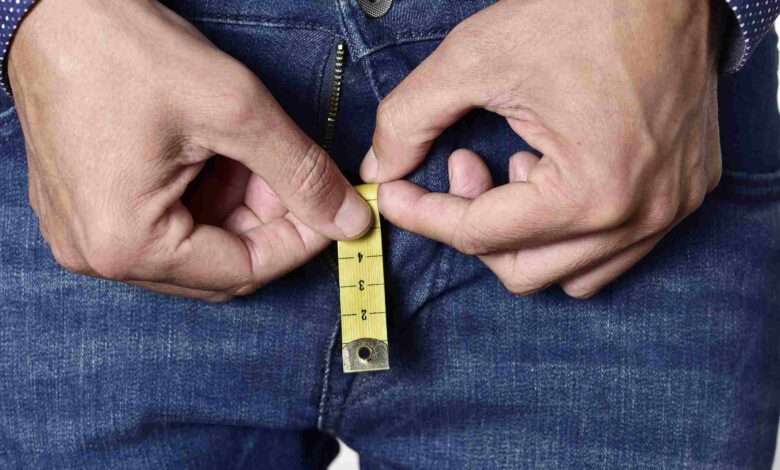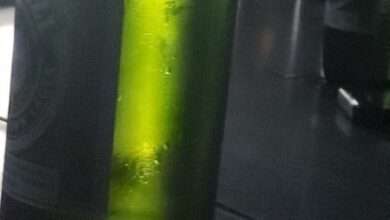Penis Enlargement: Myths, Facts & Dangers
There is little scientific support for nonsurgical methods to enlarge the penis.

Penis Enlargement: Myths, Facts & Dangers
Ads for penis-enlargement products and procedures are everywhere. A vast number of pumps, pills, weights, exercises and surgeries claim to increase the length and width of your penis.
However, there's little scientific support for nonsurgical methods to enlarge the penis. And no trusted medical organization endorses penis surgery for purely cosmetic reasons.
Heatstroke: Signs & Symptoms and Treatment
Most of the techniques you see advertised don't work. And some can damage your penis. Think twice before trying any of them.
Penis size: What's normal, what's not?
The fear that your penis looks too small or is too small to satisfy your partner during sex is common. But most men who think their penises are too small actually have penises that are considered typical size.
Similarly, many men have an exaggerated idea of what is considered a “typical” penis size.
The length of a non-erect penis doesn't consistently predict length when the penis is erect. If your penis is about 5 inches (13 cm) or longer when erect, it's of typical size.
A penis is considered small only if it measures less than 3 inches (about 7.5 centimeters) when erect. This is a condition called micropenis.
How partners view penis size
Advertisers would have you believe that your partner cares deeply about penis size. If you're concerned, talk to your partner.
Penis Enlargement: Myths, Facts & Dangers
Understanding your partner's needs and desires is more likely to improve your sexual relationship than changing the size of your penis.
Don't believe the hype
Companies offer many types of nonsurgical penis-enlargement treatments. They often promote them with serious-looking ads that include support from “scientific” researchers.
If you look closely, you'll see that claims of how safe they are and how well they work haven't been proved. And these products may have potentially dangerous ingredients not listed on the label.
Marketers rely on ads with people who recommend the product. Marketers may also use data that's not accurate and questionable before-and-after photos.
Dietary supplements don't require approval by the U.S. Food and Drug Administration. So manufacturers don't have to prove how safe a product is or that it works.
Penis-enlargement products
Most advertised penis-enlargement methods don't work. And some can cause permanent damage to your penis. Here are some of the most widely promoted products and techniques:
1. Pills and lotions. These usually contain vitamins, minerals, herbs or hormones that manufacturers claim enlarge the penis. None of these products has been proved to work. And some may be harmful.
Depression in Kids: Causes, Symptoms & Treatment
2. Vacuum pumps. Because pumps draw blood into the penis, making it swell, they're sometimes used to treat erectile dysfunction.
A vacuum pump can make a penis look larger temporarily. But using one too often or too long can damage elastic tissue in the penis, leading to less firm erections.
3. Exercises. Sometimes called jelqing, these exercises use a hand-over-hand motion to push blood from the base to the head of the penis.
Although this technique appears safer than other methods, there's no scientific proof it works. And it can lead to scar formation, pain and disfigurement.
4. Stretching. Stretching involves attaching a stretcher or extender device — also referred to as a penile traction device — to the penis for gentle tension.
Penis Enlargement: Myths, Facts & Dangers
A few small studies have reported length increases of half an inch to almost 2 inches (about 1 to 3 centimeters) with these devices. However, the activity may be uncomfortable. Also, it requires a commitment of at least 4 to 6 hours a day for many months to see results.
More research is needed to see if stretching is safe and if it works.
Surgery is risky and may not work
Studies of surgeries to lengthen or thicken the penis have found mixed results in safety, whether they work (effectiveness) and patient satisfaction.
Skin Care Habits That Make Your Acne Worse
At best, surgery may give a slight increase in girth to the penis. Or surgery may add a slight appearance of increased length to the non-erect penis.
But it does not change the actual length of the penis. At worst, surgery can result in complications such as infection, scarring, and loss of sensation or function.
A few things that might actually help
There's no guaranteed safe and proven way to enlarge your penis. But there are a few things you can do if you're concerned about your penis size.
Communicate with your partner. It may be hard to break old habits or to discuss sexual preferences with your partner. But you'll be glad you did, and you may be surprised at the spark it ignites in your sex life.
Get in shape. If you're overweight and have a “beer gut,” the extra belly fat may make your penis appear shorter than it is.
Regular exercise can make a big difference. Better physical conditioning may not only make you look and feel healthy, but also can improve strength and endurance during sex.
Talk to your health care provider or a counselor. Feeling unhappy about the size of your penis is common. A mental health specialist or your family health care provider can help.
Many men feel better with reassurance that they are “typical.” Advice about how to better satisfy their partner without resorting to cosmetic penis enlargement can also help.
In conclusion
Many men believe that increasing the size of their penises will make them a better lover or make them more attractive. But chances are your penis is within the typical size range.
Indian Bedroom Sweets & Love Portions Flood Harare
Even if your penis is smaller than average, it may not matter to your partner. In addition, there's no proven way to make a penis larger.
The solution to your concerns about penis size may be as easy as talking with your partner or getting in shape. If those steps don't help, try talking with a professional counselor about your concerns.
Source| Mayo Clinic


























